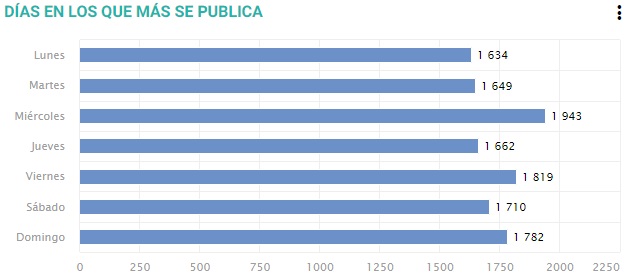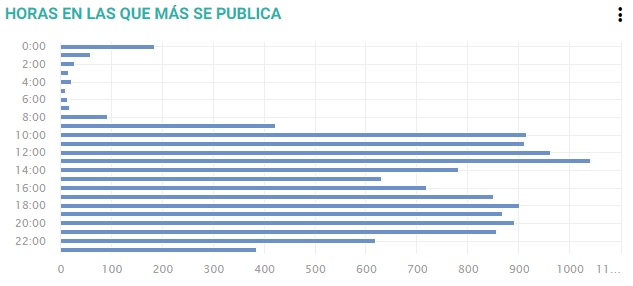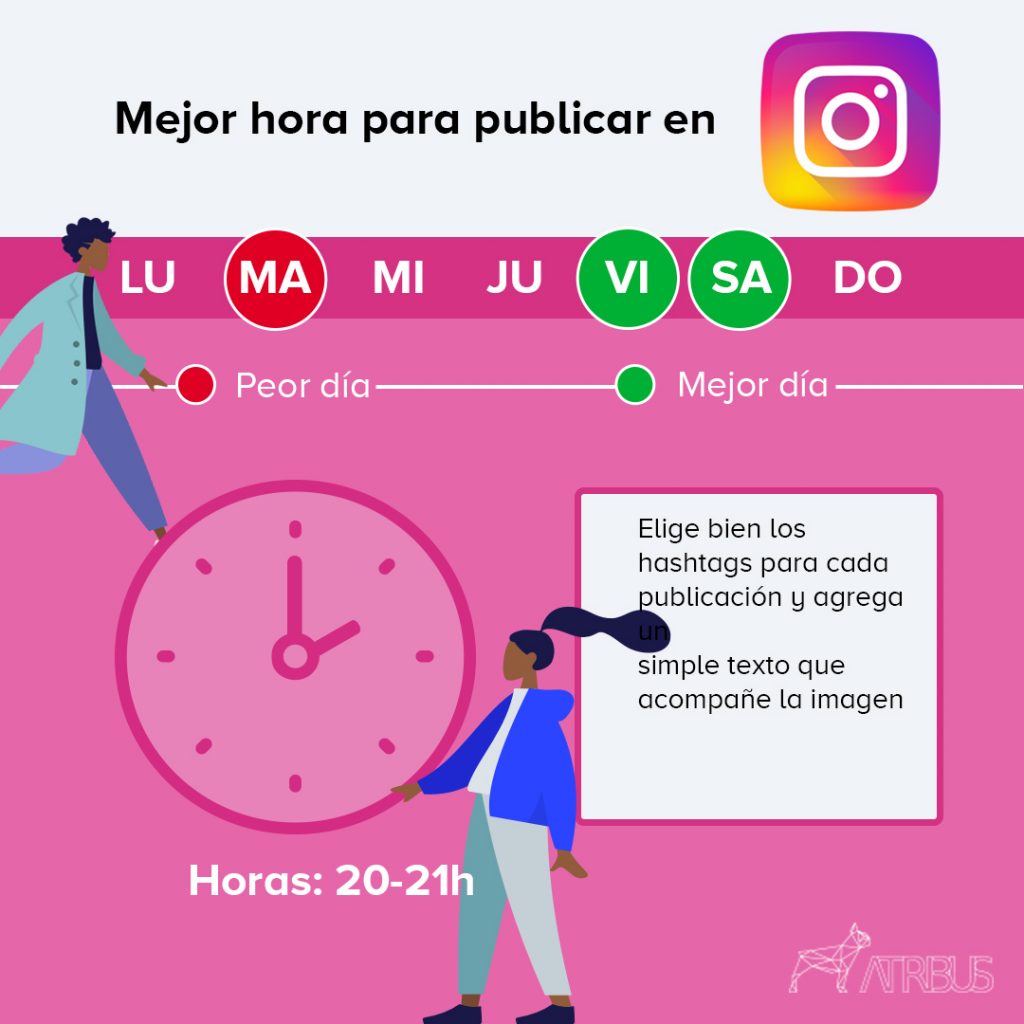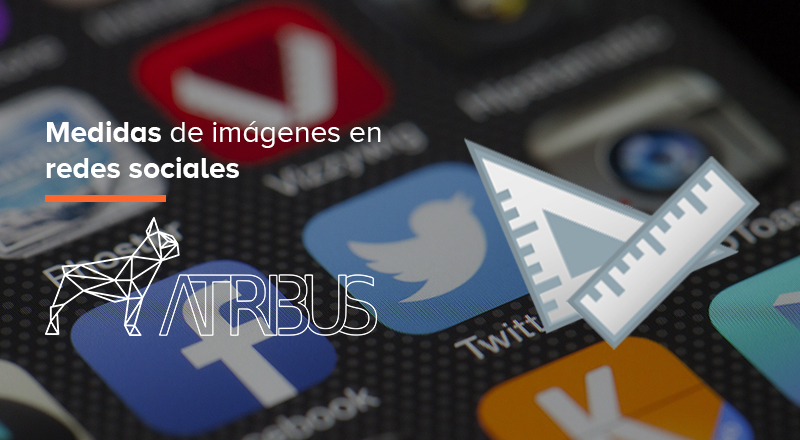¿Alguna vez te has preguntado cuál es el mejor horario para publicar en Instagram y lograr una mayor interacción y/o viralidad de tus contenidos? Son múltiples las variables que intervienen a la hora de determinar cuándo publicar en Instagram. Este factor es fundamental, siendo una de las plataformas con más crecimiento de usuarios del mundo, en pleno 2024, cada vez es mayor su poder dentro de las redes sociales.
La actividad de tu empresa, el target al que va dirigido, el propio contenido o la red social donde quieres publicar son factores que intervienen a la hora de concretar el período de tiempo idóneo para lograr buenos resultados en tu estrategia de marketing, por lo que en este post te ayudaremos a dilucidar esta cuestión y con suerte que descubras cual es la mejor hora para publicar en Instagram. Además, conocer cuándo publicar en Instagram, ayudará a crecer tus publicaciones y potenciará lo relativo a aspectos como son los CTA. Ha llegado la hora de subir fotos y vídeos a Instagram de forma optimizada.
La hora pico para publicar en Instagram
Hemos escogido Instagram porque es una de las redes sociales favoritas de las marcas para llevar a cabo sus estrategias de Social Media. Así que, si estás pensando abrirte una cuenta en esta aplicación, no lo dudes. Lee con atención.
Cada día se publican alrededor de 80 millones de fotografías en esta red social, que cuenta con más de 400 millones de usuarios activos a diario.
Por otro lado, al tratarse de una plataforma directamente móvil, los usuarios se mantienen conectados y mayormente reaccionan de la misma manera ante tus publicaciones a cualquier hora del día.
Motivos fundamentales para analizar los usos y costumbres de los instagramers y estrechar el abanico horario y encontrar cual es la mejor para publicar en Instagram.
¿A qué hora publicar en Instagram?
Centrándonos en cuál es la hora clave para publicar en Instagram, cuestión que nos ocupa, apuntar que son muchos los estudios realizados.
Algunos de ellos han demostrado que, según los días y horas, tus publicaciones llegarán más que otros a los usuarios.
Es evidente que, si quieres obtener engagement y respuesta en tus post, no publicarás a las 3:00 de la madrugada de un miércoles laboral. Lo mejor es atenerse a los hábitos cotidianos de cada uno.
Por su parte, el estudio de TrackMaven concluye que, de forma general para Instagram, el engagement permanece más o menos constante a lo largo de toda la semana.
El engagement goza de leves picos los lunes, mientras que los domingos experimenta un ligero descenso.
Asimismo, del mismo estudio se desprende que la hora clave para publicar en Instagram es entre las 20:00 y 21:00 horas.
La hora clave para publicar en Instagram con Atribus
Os hemos contado lo que revelan algunos estudios sobe la mejor hora para publicar en Instagram de forma general, pero si lo que necesitas es mayor precisión, con Atribus puedes conseguirla.
Desde Atribus, puedes monitorizar cualquier evento o hashtag. No sólo te ofrecemos datos como menciones recogidas sobre las búsquedas analizadas en las redes sociales, geoposicionamiento o género de los usuarios más participativos, sino que también puedes analizar la franja horaria en la que más se ha posteado en base a las búsquedas que hayas decidido monitorizar y que tú mismo podrás personalizar; analizando palabras o hashtags para así encontrar cual es la mejor hora para publicar en Instagram en tu sector.
Aquí te mostramos algunos resultados de estudios que hemos hecho a través de la monitorización: las Fallas en redes sociales , El Impacto del Día de la Mujer o los Premios Oscars.
Estos gráficos son un ejemplo de lo que obtendrías en base a las búsquedas que monitorices.


En el primer gráfico, puedes ver los días en los que más se publicó en Instagram. Fue el miércoles el día de mayor interacción en la red.
En cambio, en el segundo gráfico de impresiones por hora de la monitorización, en este caso, la hora que más impresiones recibió fue entre las 11:00-12:00 horas.
Con las gráficas de Atribus puedes realizar un análisis de las horas y los días en los que tus seguidores, fans, usuarios, amigos…publican con más frecuencia.
Ello te permitirá lograr mayor visibilidad, más engagement y respuestas a tus publicaciones, que repercutirá en una gestión adecuada del social media y, sobre todo, en cosechar una buena reputación online.
Mejores horas y días para publicar en Instagram

Consejos para publicar en Instagram
- Aunque no sea una ciencia del todo exacta, guíate por los hábitos cotidianos para publicar, es decir, en el desayuno, a la hora del descanso, la comida, la salida del trabajo y por la noche.
- Debes tener en cuenta el contenido que vas a publicar y en qué franja horaria puede tener mayor éxito cómo hemos visto con los ejemplos de ATRIBUS.
- Elige bien los hashtags para cada publicación y agrega un simple texto que acompañe la imagen.
- Es importante que tengas en cuenta las tendencias de ese momento, de lo que la gente está hablando ese día, los hashtags del momento o el tema que ha dado de qué a hablar a lo largo de la semana.
- Cuida cada foto que hagas y sé creativo.
- Publica vídeos, no te olvides de ellos.
- Sigue a instagramers que te gusten.
- Comenta, comparte, disfruta.
- Sé constante en tus publicaciones.
- Activa las notificaciones de tus usuarios favoritos para no perderte sus publicaciones.
En definitiva, si quieres tener éxito en las redes sociales, primero, debes de valorar el contenido que quieres publicar, dónde publicarlo y qué días y horas son las más convenientes para hacerlo y probar una y otra vez hasta comprobar cuál es la mejor hora para publicar en Instagram en tu caso concreto. Poner un horario para publicar en las redes sociales puede ser la clave al éxito y conocer a qué hora subir fotos a Instagram.
Elige el mejor horario para publicar en Instagram
Con sus algoritmos sofisticados y los secretos detrás de los hashtags, Instagram hace tiempo que ya no es solo un hobby. Se ha convertido en una ciencia. Si eres uno de esos aspirantes que intentan entrar en el iceberg de las estrellas de Instagram, querrás saber cómo usar la plataforma para tu beneficio.
Uno de los componentes clave para ganar engagement es determinar la mejor hora del día para publicar en Instagram.
Los mejores momentos para publicar en Instagram los domingos
Los domingos entre las 9 am y las 3 pm son los mejores momentos para publicar en Instagram. Sin embargo, la tasa de engagement fue generalmente más baja en este día.
Los mejores momentos para publicar en Instagram los lunes
El horario pico para publicar en Instagram el lunes sigue siendo entre las 11 a. m. Las tasas de participación se mantuvieron relativamente modestas durante casi 12 horas, desde las 8 a. m. hasta la 1 p. m. hasta las 20:00
El mejor momento para publicar en Instagram el martes
Los martes, las horas pico comienzan a las 11 am. Las tasas de participación continuaron cayendo hasta después de las 3:00 p. m., con el pico más bajo a partir de las 10:00 p. m.
El mejor momento para publicar en Instagram el miércoles
El miércoles es el siguiente mejor día para publicar en Instagram después del martes, con toneladas de interacción a partir de las 8 a.m. El engagement culminó entre las 21:00 y las 11:00 horas. hasta la 1pm
El mejor momento para publicar en Instagram el jueves
El jueves es un buen momento para comenzar a publicar en Instagram a las 7 a.m., con un pico solo entre las 11 a.m. Disminuye gradualmente después de las 12:00 p. m.
El mejor momento para publicar en Instagram el viernes
El horario pico para publicar en Instagram el viernes es similar al lunes y miércoles, entre las 11 a. m. Engagement suficiente durante 2 horas antes de las 11:00 a. m. a la 1:00 p. m. 2 horas después de la 1pm.
El mejor momento para publicar en Instagram el sábado
Para la mayoría de las personas, el sábado no es el mejor día para publicar en Instagram. Suele ser un día libre en el que descansar de las redes sociales. Se observó suficiente participación de los usuarios de Instagram a partir de las 10 a.m. hasta la 1 p.m.
Los mejores momentos para publicar en Instagram durante Covid
La pandemia ha llevado a un aumento en el uso de Instagram durante la semana laboral, lo cual es provocado por la instauración del teletrabajo. Durante la pandemia, el uso de Instagram entre semana y durante el horario comercial ha aumentado significativamente.
Publica en Instagram una o dos veces al día.
La mejor hora y momento para publicar Reels
Los reels de Instagram se están convirtiendo en una parte esencial de las estrategias de contenido para marcas e influencers en 2024. Publicar de 4 a 7 reels por semana es crucial para llamar la atención de los usuarios de Instagram. Al publicar Reels constantemente, Instagram priorizará tu contenido, lo que ayudará a aumentar la visibilidad de su cuenta y aumentar el engagement.
Sin embargo, publicar de cuatro a siete reels aleatorios en una semana para aumentar la visibilidad de tu cuenta no es suficiente. El algoritmo de Instagram es tan determinante en cuándo publiques tus Reels como en su constancia. Es por eso que debes prestar la máxima atención a los mejores momentos para publicar reels en Instagram.
Mejor hora para publicar en IGTV
La función de video de larga duración en Instagram, IGTV, brinda a los usuarios una experiencia de video más rápida y poderosa que cualquier otra red social.
El primer mejor momento para publicar en IGTV es el miércoles a las 8 p. m. El siguiente mejor momento es durante toda la semana, especialmente de lunes a jueves a las 8:00 p. m. o a las 10 p. m., cuando los usuarios terminan su trabajo y buscan relajarse en mirando contenido en redes sociales.
El mejor momento para publicar una historia de Instagram
De los 500 millones de personas que revisan Instagram Stories todos los días, un tercio de la mayoría de las views provienen de marcas. Según Facebook, el 47% de los usuarios en los EE. UU. están de acuerdo en que Instagram Stories les ayuda a «ser más auténticos en sus interacciones con sus audiencias». El 39% de los usuarios de Instagram dicen que están más interesados en una marca después de verla en sus Historias de Instagram.
Entonces, ¿cuándo es la mejor hora para publicar una historia de Instagram para tu marca? Aquí hay algunos puntos a tener en cuenta.
Dado que las Historias de Instagram duran 24 horas, no limites las stories al «mejor momento».
Puedes publicar historias en cualquier momento del día, incluso tarde en la noche o incluso temprano en la mañana. Independientemente, tus seguidores verán tus historias en sus feeds a la mañana siguiente.
Además, archiva y ancla las mejores historias en la sección Destacados para que siga disponible en tu perfil incluso después de 24 horas.
Piensa en Instagram como un todo, de lunes a viernes a las 9 a. m. se puede ver el engagement más alto a las 4 p.m. Este, sin embargo, disminuye todos los días antes de las 6 am y después de las 9 pm. De una a siete historias debería ser la frecuencia óptima de la publicación.
El mejor momento para transmitir en vivo en Instagram
Transmitir en vivo en Instagram es la mejor manera de construir relaciones sólidas con tus seguidores. También te permite chatear y entablar unión con seguidores con los que nunca has hablado antes. Por lo tanto, es importante transmitir en vivo cuando todos tus espectadores puedan unirse a tu sesión en streaming. Se recomiendan los lives de Instagram de lunes a viernes a las 12 del mediodía. O de 7:00 p. m. a 9:00 p. m. es ideal, ya que los usuarios tienden a relajarse y descansar ojeando sus feeds.
Descubre los mejores momentos para publicar en Instagram para tu marca con Atribus
Atribus te ofrece un desglose completo de la demografía de la audiencia, el sentimiento, los mejores momentos para publicar en función de los Me gusta, la actividad de los seguidores y los comentarios. Esto te ayudará a planificar y desarrollar tu estrategia de marketing de Instagram con precisión en función de las preferencias del público al que te diriges.






Me gusto tu artículo, muy claro gracias.
Entendido. Claro y conciso y muy buen explicado. Gracias
Fue muy útil, gracias.
Súper sencillo, conciso y clarificador, mil gracias !
excelente contenido
Hola , tomo nota!!
Mi perfil lo tengo privado, eso puede afectar a que mis reels no tenga muchas vistas aparte de lo demás??
Hola! Efectivamente si lo tienes privado las visitas a tus reels van a ser muy limitadas ya que sólo lo verá tu comunidad. Un saludo!